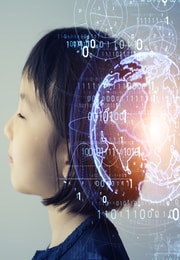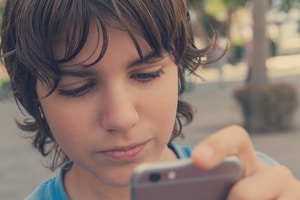Computational Thinking For Children
Enhancing the development of computational thinking is an essential mental process for all children in today’s information and knowledge society. Mainly because mastering it will allow them to adequately face their future work and, above all, it will give them the ability to be decisive in the day to day and in any area of their lives.
Moreover, it is a fundamental resource for any child, since the development of this type of thinking reduces the digital divide, helps their integration into today’s society and facilitates the acquisition of many important transversal skills. These include critical thinking, adaptability, information management in different environments – such as interactive – and, of course, mastery of digital technologies themselves.
Therefore, although its development implies the approach of complex concepts, it also involves competencies that we use and develop in multiple areas of our daily lives. This approach simplifies its teaching, by giving examples that are simple and familiar to children.
In this article we are going to analyze some resources that facilitate the teaching and understanding of computational thinking, but first we need to understand what exactly this concept consists of.
What is Computational Thinking?
There are multiple definitions, but they all agree that its main objective is to solve problems. This is reflected, for example, in the description of computational thinking by the International Society for Technology in Education (ISTE) and the Computer Science Teachers Association (CSTA).
For these bodies, computational thinking is a problem-solving process that includes at least the following characteristics:
- Formulation of problems in such a way that it is possible to use a computer and other machines to solve them.
- Logical organization and data analysis.
- Representation of data through abstractions such as models and simulations.
- Automation of solutions through algorithmic thinking – understood as a series of discrete and ordered steps -.
- Identification, analysis and implementation of possible solutions, with the objective of achieving the most effective and efficient combination of steps and resources.
- Generalization and transfer of the problem-solving process to a wide variety of situations.
This definition allows us to understand the different elements that make up computational thinking. But it is also important to understand that this type of thinking is not only used to solve problems with computational means, but can also be used to solve other problems in very different fields.
Just like a child may be learning how to code for the purposes of education, there are so many other benefits of coding.
In short, computational thinking allows children to learn to solve everyday problems by analyzing them, breaking down the process of solving them into small tasks, identifying patterns, following algorithms and detecting errors in order to fix them.
In what activities in our daily lives do we use computational thinking?
Computational thinking is based on reasoning to understand problems and seek the most efficient solutions. Therefore, it is essential that the exercises focused on developing this skill are based on interaction with students, and that they are invited to continuously reflect on the concepts they learn. And one of the best ways to achieve this is to use games and other resources that encourage their participation.
As computational thinking involves the development of several and very diverse skills, you can use these games and exercises to learn each of them.
Examples of Computational Thinking
- Logical thinking: Sudokus are an excellent resource to develop it.
- Decomposition: both the analysis and the description of dance choreographies allow children to analyze the parts of a whole, to define and structure them.
- Patterns: series of numbers are a classic resource that helps students identify the patterns on which their construction is based.
- Abstraction: the game “Guess what” allows children to recognize and abstract the essential elements of an object or entity.
- Algorithms: with a simple game in which the student is invited to describe an activity such as, for example, getting dressed or going to class, it is easier for children to understand what an algorithm consists of.
These are just a few examples, but the possibilities are endless. In addition, many of these options are available through computer resources, a good way to develop computational thinking.
How Critical Thinking Relates
Critical thinking is closely related to the logical aspects of computational thinking. However, critical thinking allows for less strict process of the evaluation of conditions. Critical thinking identifies positives and deficiencies to come to a conclusion with limit data. The process includes debating and judging the parameters or state of a situation.
Examples of critical thinking are the grading of a subjective essay and determining whether to believe something or not.
Resources
In this resource on computational thinking, created by ProFuturo, you will find not only simple to understand definitions -mainly for 8-10 year olds, but also for older children-, but you will also have access to fun and easy to follow exercises and dynamics. These will help students to understand in depth and reinforce their learning of concepts such as decomposition, patterns, algorithms, error detection or bugs.
In short, computational thinking is a key mental process that can be taught in a simple way to all children from a very early age, also favoring the reduction of the digital divide. The best way to explain it is by applying computational thinking strategies that make children use logical reasoning and reflection to understand the concepts in depth.





